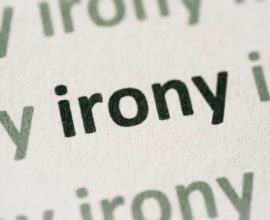How to Write and Publish a Short Story
Short stories are one of the most undervalued and underrated forms of writing. They can be used to explore a range of emotions and ideas in a way that longer pieces can’t, and they often make for more powerful and memorable reading experiences.
But writing a successful short story is not easy. It requires a lot of skill, craft, and hard work. In this article, we’re going to take you through the basics of how to write a short story that works. So whether you’re a beginner or an experienced writer, read on for all the tips you need to create a short story that will wow your readers.
- Understanding what is a short story
- Understand the purpose of a short story
- Different writing styles in short stories
- Choose a topic or theme
- Come up with a plotline
- Create characters and develop their personalities
- Write the beginning, middle, and end of the story
- Revise and edit your work
- Obtain feedback from your trusted friends
- Polish your work until it’s perfect
- Enter writing contests
- Publish your short story
- Market your short story to increase its exposure
- Write a sequel or prequel to continue the story
- Create an anthology of short stories
Understanding what is a short story
A short story is a work of fiction that typically can be read in one sitting and focuses on a self-contained incident or series of linked incidents, with the intent of evoking a “single effect” or mood. A well-written short story will transport the reader into the world created by the author and leave him with a lasting impression. When you start with how to write a short story, it is important to understand the components that make up this genre of literature.
What are the characteristics of a short story?
A short story generally has the following characteristics: it is usually focused on only one main event or problem; it has a small, limited number of characters; it is set in a specific time and place; and it uses direct, simple language.
The events in a short story are usually realistic and discoverable, which allows the reader to suspend disbelief and immerse himself in the world of the story. Good short stories also maintain a consistent tone throughout, which creates an atmosphere or mood that further engages the reader.
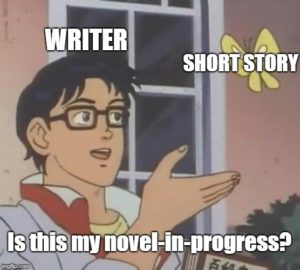
By understanding how to write a short story, you can create a powerful piece of literature.
Understand the purpose of a short story
The purpose of a short story is to deliver a moral, or a theme, or entertain the reader. It can be anything the author wants it to be, which is why finding the purpose of a short story can be tricky. The best way to find the purpose of the short story when you start how to write a short story is to ask yourself what you want your reader to take away from the story.
Do you want them to laugh? To cry? To feel scared? Once you’ve decided on the emotions you want your reader to feel when reading your short story, you can start shaping it to achieve that goal.
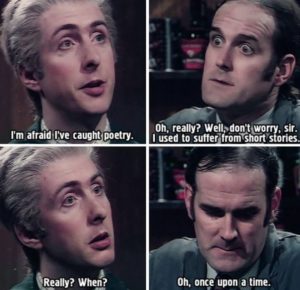
If you’re having trouble figuring out what you want your short story to accomplish, try looking at examples of other stories that have resonated with you. What was it about those stories that made them so impactful? When you work on a short story, you can start to apply those same principles to your writing. With practice, you’ll be able to craft short stories that are not only enjoyable to read, but also have a lasting impact on your readers.
Choose a topic or theme
Before you can begin writing a short story, you need to choose a topic and develop the main theme. The topic is the subject or story idea that you want to write about, while the theme is the message or moral of the story. Once you have decided on a topic and theme, you can start brainstorming ideas for your story. To choose a topic, ask yourself what you want to write about.
Once you have a topic in mind for how to write a short story, try to narrow it down to one specific event or idea. This will make it easier to develop the main theme. Once you have chosen a topic, think about what message you want to communicate with your story.

What do you want your readers to take away from the story? Keep your theme in mind as you write, and make sure that all of your elements support it. With a strong topic and theme, you will be well on your way to writing a great short story!
Come up with a plotline
One of the most important aspects, when you start how to write a short story, is coming up with a strong plotline. This can be a daunting task, but there are some effective methods you can use to generate ideas and create an outline for your story.
One way to come up with a plotline is to start with a basic idea or concept and then flesh it out by asking yourself questions about the characters, setting, and events.
For example, if you have an idea for a story about a young girl who discovers a magical kingdom, you can ask yourself questions about who the girl is, where the kingdom is located, and what happens when she enters it. Answering these questions will help you to develop a more detailed plotline when you start how to write a short story.

Another method you can use to generate ideas for your short story is to brainstorm with someone else. This can be a friend or fellow writer. Brainstorming can help you to come up with new ideas and perspectives that you might not have thought of on your own.
Once you have some ideas for how to write a short story, it’s time to start outlining the plot. Begin by creating a basic structure for your story, including the main conflict and several key scenes. Then, flesh out each scene with more details with the action and dialogue. By taking the time to outline your plot line before you start how to write a short story, you’ll be able to craft a more focused and cohesive story.
Create characters and develop their personalities
One of the most important aspects of any short story is the characters. Without well-developed characters, your short will lack depth and reader engagement. So how does one go about creating characters and developing their personalities when writing a short story? First, it is important to start with the basics: name, age, motives, and backstory.
This will help to establish the character’s identity and provide a foundation for their personality. Once the basic information is established, the fun begins! Don’t be afraid to experiment with different personality traits and characteristics. It can be helpful to think about how the character would react in various situations.
What motivates them? What are their fears? As you develop the characters, keep in mind how they will interact with each other. Will they be friends or foes? How will their relationship change over time? By taking the time to create fully realized characters, you will bring your short story to life and create an unforgettable experience for your readers.
Write the beginning, middle, and end of the story
A well-crafted short story should have three acts: the beginning, the middle, and the end. Each act serves a specific purpose and should be written intriguingly.
The beginning of your short story should introduce the reader to your characters and setting, as well as establish the plot. The middle is where the conflict unfolds and the stakes are raised. And the end is where everything comes to a resolution.
To write an effective beginning, keep your opening scene interesting and full of suspense. Draw your readers in with dynamic characters and an exciting plot. In the middle, keep the momentum going by upping the ante with more conflict and higher stakes.
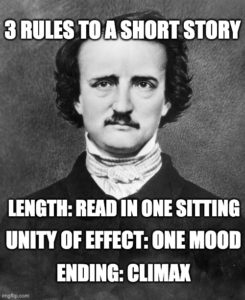
And finally, wrap things up in a satisfying way that brings all the threads of your story together. By following this three-act structure, you can craft a short story that is both engaging and memorable.
Revise and edit your short story
Any writer knows that revising and editing are essential steps in the creative process. Revising helps you to take a fresh look at your story and make sure that it is truly compelling. Editing, on the other hand, is all about making sure that your story is free of errors and flows smoothly.
However, revising and editing can be daunting tasks, especially if you are not used to doing them. In this article, we will provide some tips on how to revise and edit your short story to create a compelling read. First, we will discuss the importance of taking a break from your story. Once you have finished writing, put the story away for a few days or even weeks.
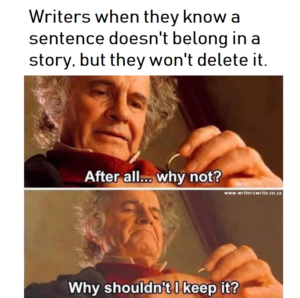
This will give you some distance from the story and allow you to come back to it with fresh eyes. Next, we will talk about the different aspects of revising, such as plot, characterization, and setting. Finally, we will share some tips on how to edit your story for grammar, punctuation, and spelling. By following these tips, you can ensure that your short story is truly compelling.
Obtain feedback from your trusted friends
Feedback and constructive criticism are important aspects of being a writer, especially when it comes to writing short stories. Feedback can help you improve your storytelling by pointing out errors, inconsistencies, or areas that need further development. Additionally, feedback can help you gauge whether or not your story is impactful and resonates with your audience.

Without feedback, it can be difficult to tell whether or not your story is actually making an impact or if it’s just falling flat. Therefore, feedback and constructive criticism from friends and readers can be essential in helping you improve your short story and ensure that it’s having the desired effect.
Polish your work until it is perfect
At some point, every writer reaches a point where they are ready to share their work with the world. However, before doing so, it is important to polish your story until it is perfect. This can be a lengthy and daunting process, but it is essential to ensure that your story is the best it can be.
One way to polish your story is to enhance your storytelling. This means making sure that your plot is interesting and that your characters are fully developed. It also means ensuring that your writing is clear and concise. Another way to polish your story is to revise it multiple times.
This includes proofreading for errors, making sure that all of the elements of your story fit together, and ensuring that your story flows smoothly from beginning to end. Finally, after you have revised your story multiple times and you are confident that it is ready, you can obtain feedback from others. This can be invaluable in helping you to see your story from a different perspective and identify any areas that may need further revision. By taking the time to polish your story, you will ensure that it is the best it can be before you share it with the world.
Enter writing contests
Numerous online writing competitions happen every month. Most of these include free registrations too. This is a great way to write more, understand what is required to publish short stories, and of course, a wonderful opportunity to win and be recognized for your work!
Whether you are a beginner or a seasoned writer, entering writing competitions is scary. But, it is never too late to take the plunge. Even if you don’t win, the experience boosts your confidence and pushes you to write more.
Publish your short story
There are several different ways that you can publish your short story. The popular means of publishing your short story are explained below.
Literary Magazines
Literary Magazines such as The Bombay Review, The Magnolia Review, and many others have a section dedicated to short stories. They are open to publishing new and emerging writers. Before you submit a short story to one of these magazines, make sure to read their already published articles to get a sense of their palette. Furthermore, carefully read the submission guidelines to avoid getting rejected for trivial reasons. Getting published in a Literary Magazine adds immense weight to your portfolio and builds your credibility as a writer. These magazines are renowned for their work and publish a variety of genres ranging from Fables to experimental short stories.
Traditional Publishing
The good old-fashioned way of publishing is always an option. You can take the Traditional Publishing route by sending your work to a publishing house. An agent will help you circulate your work and find you a suitable publisher. However, this is one of the more difficult routes because not many Traditional Publishing houses are looking to publish short stories by new writers.
Self-publishing
This includes publishing your short story on a personal blog, website, or social media platform. The Notion Press Platform for publishing is also an option for you to publish your short stories in just a few simple steps! Notion Press allows you to have complete creative control over your work and the process of publishing. You can design your cover and edit your book with the help of top-grade tools. This self-service is completely free of charge. Once published, your book is available on leading e-commerce websites such as Amazon and Flipkart, along with the Notion Press website. You can earn 70% profits from your book sales and have complete ownership of your book! At Notion Press, we aim to share stories, spread ideas, and change the world!
Market your short story to increase its exposure
When it comes to marketing your short story, the most important thing is to identify your target readers. Once you know who your ideal reader is, you can tailor your marketing strategy to appeal to them specifically. For example, if your target audience is young adults, you might promote your story on social media platforms like Twitter and Instagram. If your target audience is middle-aged adults, you might market your story through book clubs or literary magazines.
The key is to get creative and think outside the box. There are endless possibilities when it comes to marketing your short story. The most important thing is to identify your target audience and tailor your approach accordingly. With a little effort, you can increase the exposure of your story and find the readers who will appreciate it the most.
Write a sequel or prequel to continue the story
Now that you have a hit short story in your hands, what next?
One of the great things about writing a short story is that it can be the perfect springboard for a sequel or prequel.
If your original story was well-received, then readers will likely be eager to see more from the same world and characters. This gives you a unique opportunity to capitalize on your success and explore the story in even greater depth.
When planning a sequel or prequel, it’s important to think about how you can build on the elements that made the original story successful. What new insights can you offer? What new adventures can your characters embark on? By carefully planning your sequel or prequel, you can ensure that it is every bit as exciting and engaging as the original.
Create an anthology of short stories
A short story is a work of fiction that typically tells a single, self-contained story. In the wake of a successful short story, you may find yourself inspired to create an anthology of short stories. An anthology is a collection of short works, usually by different authors. Creating an anthology of short stories can be a rewarding way to share your love of literature with others.
Thanks for reading! I hope this article has helped you to understand how to write and publish a short story. Writing can be a daunting task, but it doesn’t have to be. Just remember to take your time, plan your story, and revise as needed. And don’t forget to have fun! Publishing your story can be a bit of a challenge, but there are many resources available to help you. Start by doing some research and then submit your story to a few literary journals. With a little effort and perseverance, you’ll be on your way to seeing your work in print!




